Module 3 -- Introduction to Circuit Protection, Control, and Measurement
Pages i,
1-1,
1-11,
1-21,
1-31,
1-41,
1-51,
1-61,
1-71,
2-1,
2-11,
1-21,
2-31,
2-41,
3-1,
3-11,
3-21,
3-31,
AI-1,
AII-1,
AIII-1,
IV-1,
Index
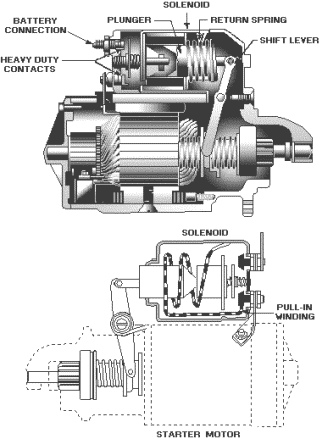
Figure 3-18. - Starter motor and solenoid. Maintenance of SOLENOIDS If you
suspect that a solenoid is not working properly, the first step in troubleshooting it is a good visual inspection.
Check the connections for poor soldering, loose connections, or broken wires. The plunger should be checked for
cleanliness, binding, mechanical failure, and improper alignment. The mechanism that the solenoid is connected to
(actuates) should also be checked for proper operation. The second step is to check the energizing voltage
with a voltmeter. If the voltage is too low, the result is less current flowing through the coil and a weak
magnetic field. a weak magnetic field can result in slow or poor operation. Low voltage could also result in
chatter or no operation at all. If the energizing voltage is too high, it could damage the solenoid by causing
overheating or arcing. In either case, the voltage should be reset to the proper value so that further damage or
failure of the solenoid will not result. The solenoid coil should then be checked for opens, shorts, and
proper resistance with an ohmmeter. If the solenoid coil is open, current cannot flow through it and the magnetic
field is lost. a short results in fewer turns and higher current in the coil. The net result of a short is a weak
magnetic field. a high- resistance coil will reduce coil current and also result in a weak magnetic field. a weak
magnetic field 3-21
will cause less attraction between the plunger
and the core of the coil. This will result in improper operation similar to that caused by low voltage. If the
coil is open, shorted, or has changed in resistance, the solenoid should be replaced. Finally, you should
check the solenoid to determine if the coil is shorted to ground. If a short to ground is found, the short should
be removed to restore the solenoid to proper operation. Q21. What is the operating principle of a
solenoid? Q22. What is one example of the use of a solenoid? Q23. If a solenoid is not operating
properly, what items should be checked? RELAYS The RELAY is a device that acts
upon the same fundamental principle as the solenoid. The difference between a relay and a solenoid is that a relay
does not have a movable core (plunger) while the solenoid does. Where multipole relays are used, several circuits
may be controlled at once. Relays are electrically operated control switches, and are classified according
to their use as Power RELAYS or CONTROL RELAYS. Power relays are called CONTACTORS; control relays are usually
known simply as relays. The function of a contactor is to use a relatively small amount of electrical
power to control the switching of a large amount of power. The contactor permits you to control power at other
locations in the equipment, and the heavy power cables need be run only through the power relay contacts. Only lightweight control wires are connected from the control switches to the relay coil. Safety is also an
important reason for using power relays, since high power circuits can be switched remotely without danger to the
operator. Control relays, as their name implies, are frequently used in the control of low power circuits
or other relays, although they also have many other uses. In automatic relay circuits, a small electric signal may
set off a chain reaction of successively acting relays, which then perform various functions. In general,
a relay consists of a magnetic core and its associated coil, contacts, springs, armature, and the mounting. Figure
3-19 illustrates the construction of a relay. When the coil is energized, the flow of current through the coil
creates a strong magnetic field which pulls the armature downward to contact C1, completing the circuit from the
common terminal to C1. At the same time, the circuit to contact C2, is opened. 3-22
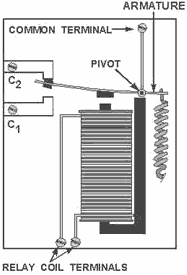
Figure 3-19. - Relay construction. A relay can have many different types of contacts. The relay shown
in figure 3-19 has contacts known as "break-make" contacts because they break one circuit and make another when
the relay is energized. Figure 3-20 shows five different combinations of relay contacts and the names given to
each. 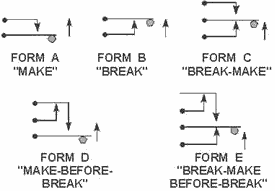
Figure 3-20. - Contact combinations. A single relay can have several different types of contact
combinations. Figure 3-21 is the contact arrangement on a single relay that has four different contact
combinations. (The letters next to the contacts are the "forms" shown in figure 3-20.)
3-23
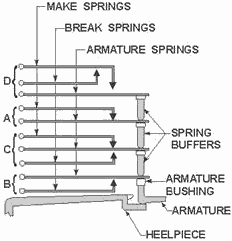
Figure 3-21. - Relay contact arrangement. One type of relay with multiple sets of contacts is the
clapper relay shown in figure 3-22. As the circuit is energized, the clapper is pulled to the magnetic coil. This
physical movement of the armature of the clapper forces the pushrod and movable contacts upward. Any number of
sets of contacts may be built onto the relay; thus, it is possible to control many different circuits at the same
time. This type of relay can be a source of trouble because the motion of the clapper armature does not
necessarily assure movement of all the movable contacts. Referring to figure 3-22, if the pushrod were broken, the
clapper armature might push the lower movable contact upward but not move the upper movable contact. 
Figure 3-22. - Clapper-type relay. 3-24
Some equipment requires a
"warm-up" period between the application of power and some other action. For example, vacuum tubes (covered later
in this training series) require a delay between the application of filament power and high voltage. a time-delay
relay will provide this required delay. A thermal time-delay relay (fig. 3-23) is constructed to produce a
delayed action when energized. Its operation depends on the thermal action of a bimetallic element similar to that used in a thermal circuit breaker. a heater is mounted around or near the element. The movable contact is mounted
on the element itself. As the heat causes the element to bend (because of the different thermal expansion rates),
the contacts close. 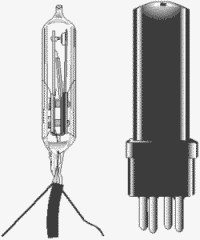
Figure 3-23. - a thermal time-delay relay. Relays can be described by the method of packaging; open,
semisealed, and sealed. Figure 3-24 shows several different relays and illustrates these three types of packaging. Figure 3-24 (E), (G) and (H) are open relays. The mechanical motion of the contacts can be observed and the relays
are easily available for maintenance. Figure 3-24 (A), (B) and (C) are semisealed relays. The covers provide
protection from dust, moisture, and other foreign material but can be removed for maintenance.
3-25
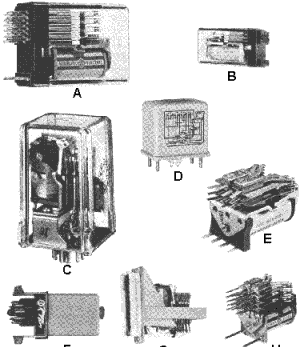
Figure 3-24. - Relay enclosures. The clear plastic or glass covers provide a means of observing the
operation of the relay without removal of the cover. Figure 3-24 (D) and (F) are examples of a hermetically sealed
relay. These relays are protected from temperature or humidity changes as well as dust and other foreign material.
Since the covers cannot be removed, the relays are also considered to be tamper-proof. With metal or other opaque
covers, the operation of the relay can be "felt" by placing your finger on the cover and activating the relay.
Q24. What is the operating principle of a relay? Q25. How does a relay differ from a solenoid? Q26. What are the two classifications of relays? 3-26
Maintenance of RELAYS The relay is one of the most dependable electromechanical devices in use,
but like any other mechanical or electrical device, relays occasionally wear out or become inoperative. Should an
inspection determine that a relay is defective, the relay should be removed immediately and replaced with another
of the same type. You should be sure to obtain the same type relay as a replacement. Relays are rated in voltage,
amperage, type of service, number of contacts, and similar characteristics. Relay coils usually consist of
a single coil. If a relay fails to operate, the coil should be tested for open circuit, short circuit, or short to
ground. An open coil is a common cause of relay failure. During preventive maintenance you should check
for charred or burned insulation on the relay and for darkened or charred terminal leads. Both of these indicate
overheating, and the likelihood of relay breakdown. One possible cause for overheating is that the power terminal
connectors are not tight. This would allow arcing at the connection. The build-up of film on the contact
surfaces of a relay is another cause of relay trouble. Although film will form on the contacts by the action of
atmospheric and other gases, grease film is responsible for a lot of contact trouble. Carbon build-up which is
caused by the burning of a grease film or other substance (during arcing), also can be troublesome. Carbon forms
rings on the contact surfaces and as the carbon rings build-up, the relay contacts are held open. When
current flows in one direction through a relay, a problem called "cone and crater" may be created at the contacts.
The crater is formed by transfer of metal from one contact to the other contact, the deposit being in the shape of
a cone. This condition is shown in figure 3-25(A). 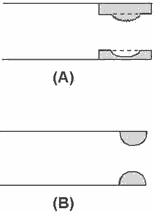
Figure 3-25. - Relay contacts. Some relays are equipped with ball-shaped contacts and, in many
applications, this type of contact is considered superior to a flat surface. Figure 3-25(B) shows a set of
ball-shaped contacts. Dust or other substances are not as readily deposited on a ball-shaped surface. In addition,
a ball-shaped contact penetrates film more easily than a flat contact. When you clean or service ball-shaped relay
contacts, be careful to avoid flattening or otherwise altering the rounded surfaces of the contacts, YOU could
damage 3-27
a relay if you used sandpaper or emery cloth to clean the
contacts. Only a burnishing tool, shown in figure 3-26 should be used for this purpose. 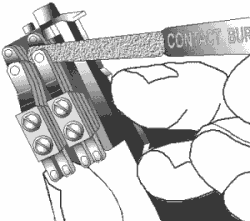
Figure 3-26. - Burnishing tool. You should not touch the surfaces of the burnishing tool that are used
to clean the relay contacts. After the burnishing, tool is used, it should be cleaned with alcohol. Contact clearances or gap settings must be maintained in accordance with the operational specifications of the
relay. When a relay has bent contacts, you should use a point bender (shown in figure 3-27) to straighten
the contacts. The use of any other tool could cause further damage and the entire relay would have to be replaced. 
Figure 3-27. - Point
bender. Cleanliness must be emphasized in the removal and replacement of covers on semi sealed
relays. The entry of dust or other foreign material can cause poor contact connection. When the relay is installed
in a position where there is a possibility of contact with explosive fumes, extra care should be taken with the
cover gasket. Any damage to, or incorrect seating of the gasket increases the possibility of igniting the vapors.
3-28
Q27. How can you determine if a relay is operating (changing from one position to the other)?
Q28. What items should be checked on a relay that is not operating properly? Q29. What is used to
clean the contacts of a relay? Q30. What tool is used to set contact clearances on a relay?
Summary This chapter has provided you with basic information on circuit control devices. The
following is a summary of the main points in this chapter. Circuit CONTROL DEVICES are used to apply or remove power and to select a function or circuit within a device. A Switch
is one type of circuit control device. Switches are classified in many different ways.
 A MANUAL
Switch must be tuned ON or ofF by a person. An AUTOMATIC Switch will turn a circuit ON or ofF without the
action of a person by using mechanical or electrical devices. MULTICONTACT Switches make possible the control
of more than one circuit or the selection of one of several possible circuits with a single switch. 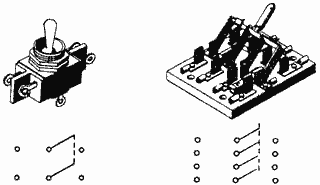
3-29
The POLES of a switch are the points at which current can enter the switch.
The number of THROWS is the number of possible circuits that can be connected to each pole. The number of BREAKS
is the number of points at which the switch breaks the circuit. 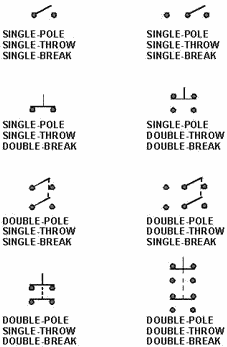
a ROTARY Switch is a multicontact switch with contacts arranged in a circular or semicircular
manner. 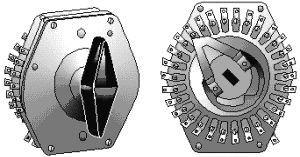
A WAFER Switch is a rotary switch in which the
contacts are on wafers. The wafers are mechanically connected by the shaft of the switch.
3-30
| - |
Matter, Energy,
and Direct Current |
| - |
Alternating Current and Transformers |
| - |
Circuit Protection, Control, and Measurement |
| - |
Electrical Conductors, Wiring Techniques,
and Schematic Reading |
| - |
Generators and Motors |
| - |
Electronic Emission, Tubes, and Power Supplies |
| - |
Solid-State Devices and Power Supplies |
| - |
Amplifiers |
| - |
Wave-Generation and Wave-Shaping Circuits |
| - |
Wave Propagation, Transmission Lines, and
Antennas |
| - |
Microwave Principles |
| - |
Modulation Principles |
| - |
Introduction to Number Systems and Logic Circuits |
| - |
- Introduction to Microelectronics |
| - |
Principles of Synchros, Servos, and Gyros |
| - |
Introduction to Test Equipment |
| - |
Radio-Frequency Communications Principles |
| - |
Radar Principles |
| - |
The Technician's Handbook, Master Glossary |
| - |
Test Methods and Practices |
| - |
Introduction to Digital Computers |
| - |
Magnetic Recording |
| - |
Introduction to Fiber Optics |
| Note: Navy Electricity and Electronics Training
Series (NEETS) content is U.S. Navy property in the public domain. |
|





















